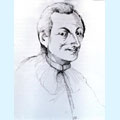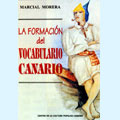LANGUAGE.
 The language is a modality of that great variation grouped in Southern Spanish and has its roots in the language of the Andalusian people who established themselves in the first years of the XV century in the islands known as the “islands of the lords” (“islas de señorío”), including the islands of Lanzarote, Fuerteventura, El Hierro and La Gomera.
The language is a modality of that great variation grouped in Southern Spanish and has its roots in the language of the Andalusian people who established themselves in the first years of the XV century in the islands known as the “islands of the lords” (“islas de señorío”), including the islands of Lanzarote, Fuerteventura, El Hierro and La Gomera.
This immediately influenced other groups that during that same period formed the Hispanic-Canary society which started to expand along the archipelago’s geography.
The first foreign influence was French and was followed closely by another, what remained of the Guanche dialect, which the aborigines spoke on the islands when the Spanish first arrived.
 Other colourful tones were introduced by the numerous Moorish population, introduced in the XV century and who underwent a severe project of christianisation. Other words and phrases from the Andalusian language must be taken into account as being originated from the Portuguese language, which was brought by different groups that established themselves in this area.
Other colourful tones were introduced by the numerous Moorish population, introduced in the XV century and who underwent a severe project of christianisation. Other words and phrases from the Andalusian language must be taken into account as being originated from the Portuguese language, which was brought by different groups that established themselves in this area.
Time has brought about significant phonic, grammatical and lexical changes to the present day language spoken in the Canary Islands, distinguishing it from the rest of the Hispanic language and maintaining its seal of tradition.